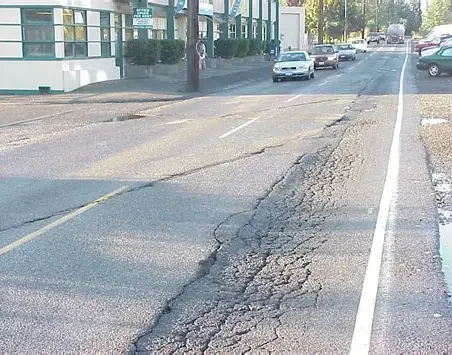Rutting in Pavements: What It Is, Why It Happens, and How We Test for It
If you’ve ever driven along a road and felt your car “track” into shallow grooves in the wheel paths, you’ve experienced rutting. It’s more than just a ride comfort issue; rutting is a serious pavement distress that can affect safety, drainage, and asset longevity.
At Pavement Management Systems, we’ve spent decades studying, measuring, and providing asset owners and city councils with accurate data for mitigating rutting. Here’s a closer look at what causes it, how it’s tested, and why understanding rutting is vital for every pavement asset manager.
Credit: Pavement Interractive
What is Rutting?
Rutting is the permanent longitudinal deformation in the wheel paths of a pavement. It appears as depressions in the asphalt or unbound layers, often accompanied by slight upheavals along the edges.
Rutting isn’t just a surface problem; it’s often a symptom of deeper structural issues. Left untreated, it can:
Trap water in wheel paths, increasing hydroplaning risk.
Accelerate surface wear, leading to potholes and cracking.
Increase maintenance costs, as deeper failures require more extensive repairs.
The Main Causes of Rutting
Rutting can develop due to one or more of the following mechanisms:
Densification – Gradual compaction of the pavement layers under traffic, especially if the mix wasn’t appropriately compacted during construction.
Shear Deformation – Lateral displacement of material within the asphalt layer under repeated loading.
Subgrade Deformation – Weak or saturated soils beneath the pavement failing under traffic.
High Temperatures – Softening of asphalt binder at elevated pavement temperatures, making it more susceptible to deformation.
Why Testing for Rutting Matters
For asset managers, rutting isn’t just about current condition; it’s about predicting future performance, so testing will help to answer:
How resistant is the mix to permanent deformation?
Is the rutting in-service caused by the surface, base, or subgrade?
Will higher traffic loads or hotter temperatures accelerate the issue?
These insights guide material selection, design adjustments, and maintenance planning.
Key Rutting Test Methods
This infographic shows a range of laboratory and field tests to measure rutting resistance and performance. Each test provides different insights into pavement behaviour:
Final Thoughts
Rutting is more than an aesthetic issue; it’s a signpost for deeper pavement health concerns. By combining modern testing with decades of field knowledge, we can design and maintain road networks that stay rut-free for longer.
📞 Talk to our team today about rutting assessments and solutions tailored to your network.


